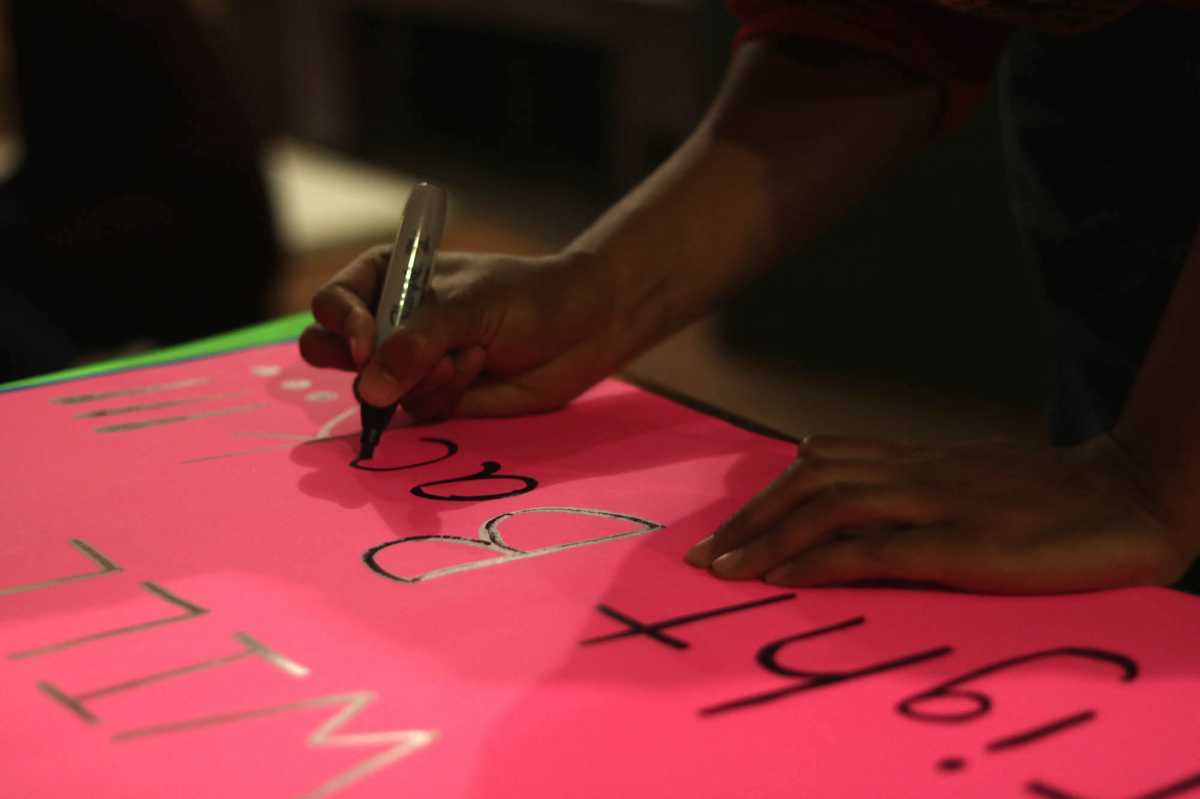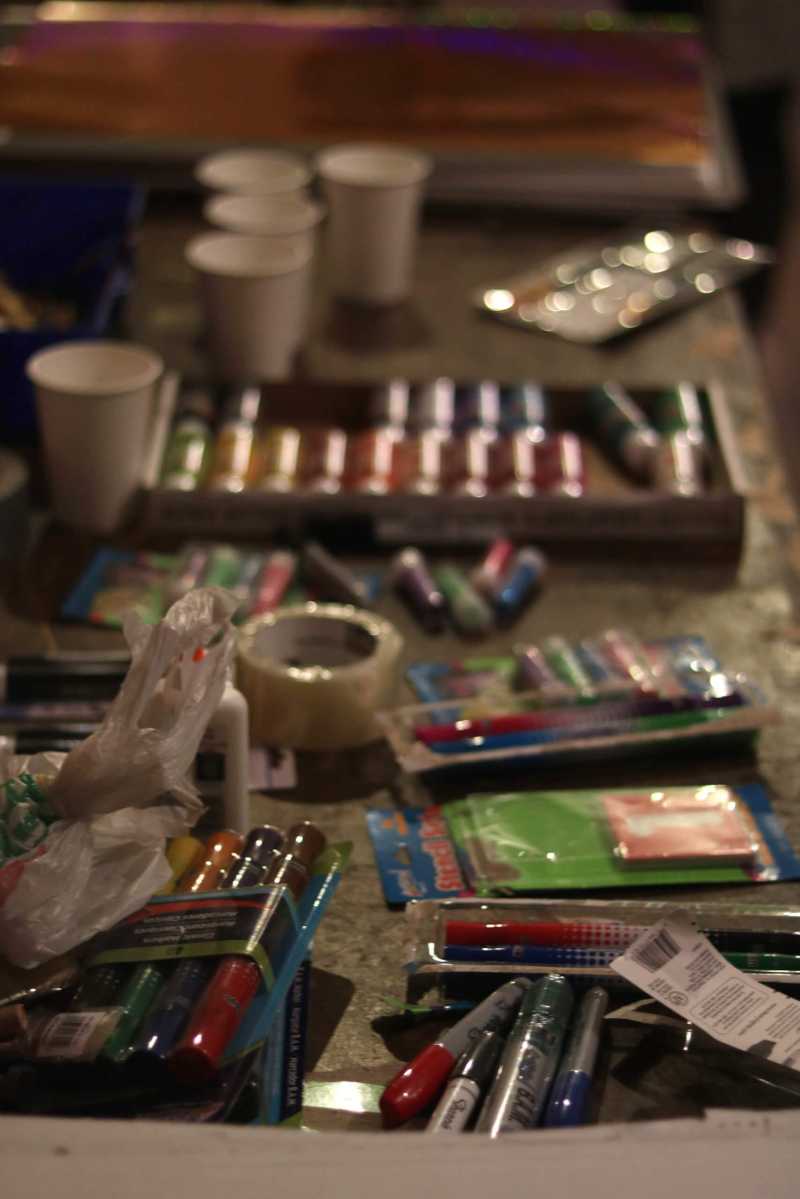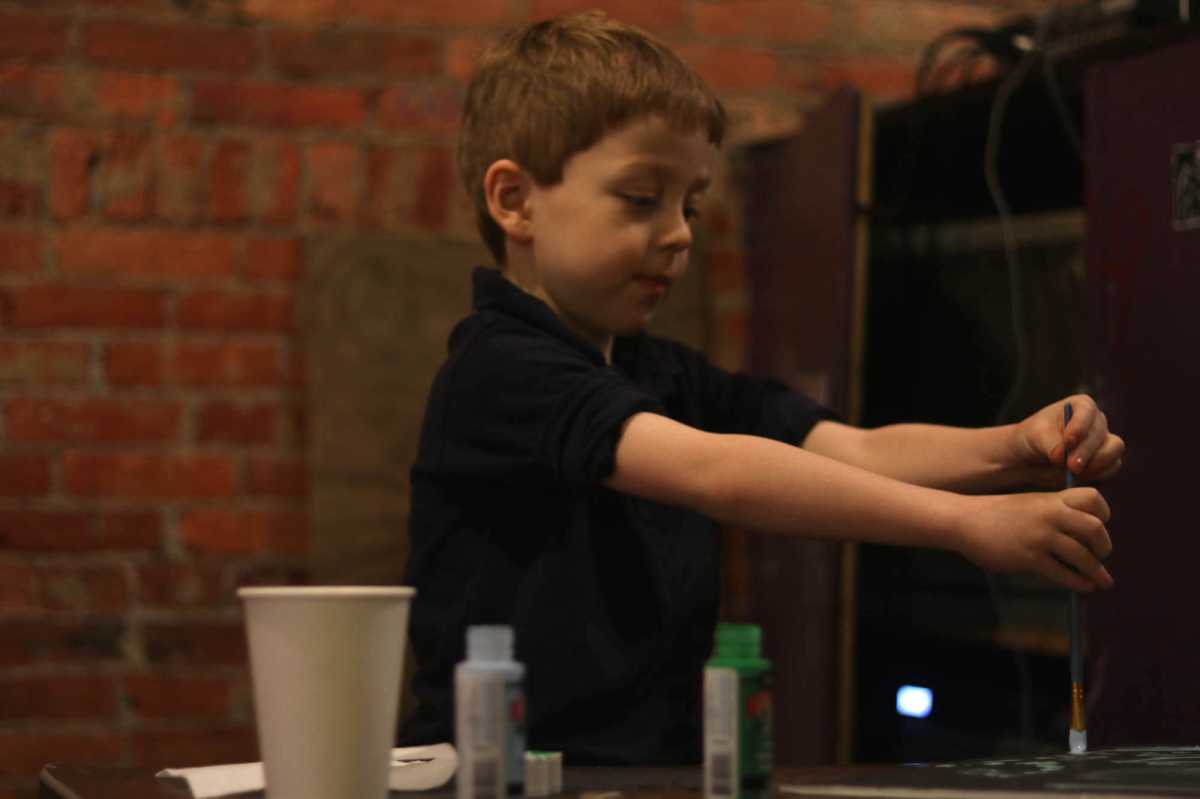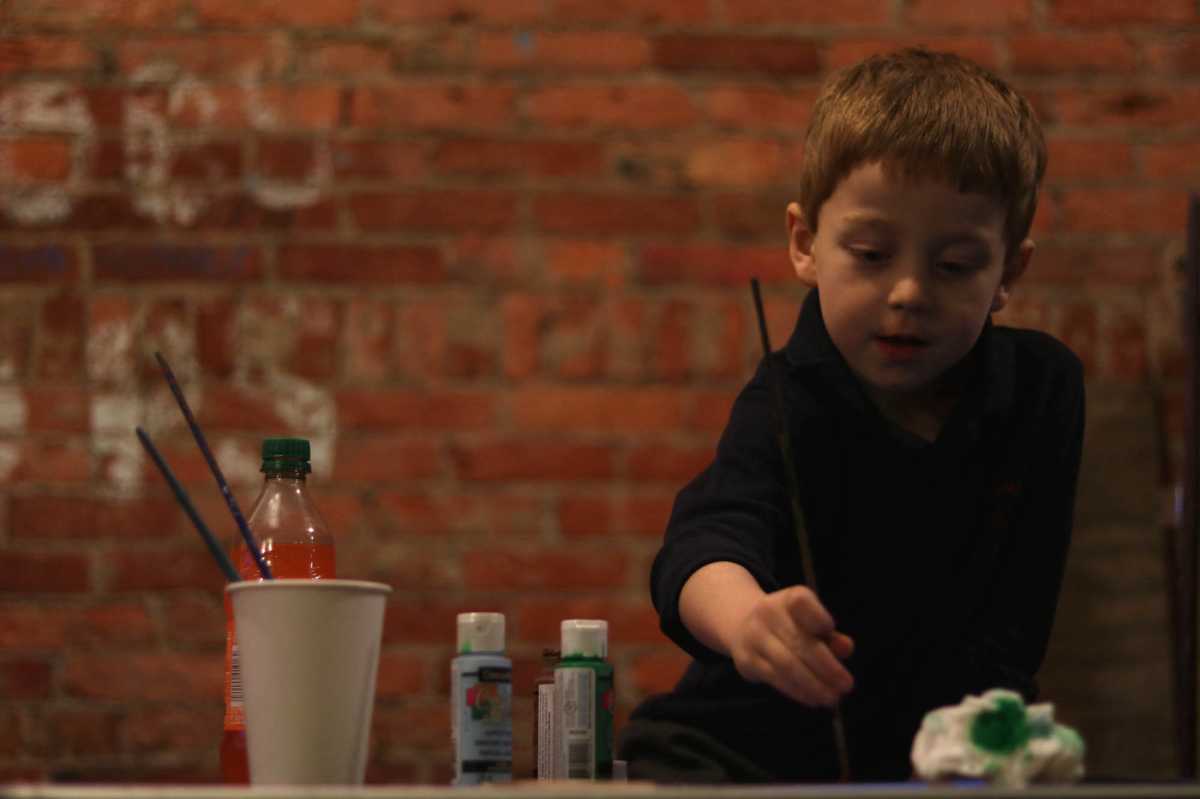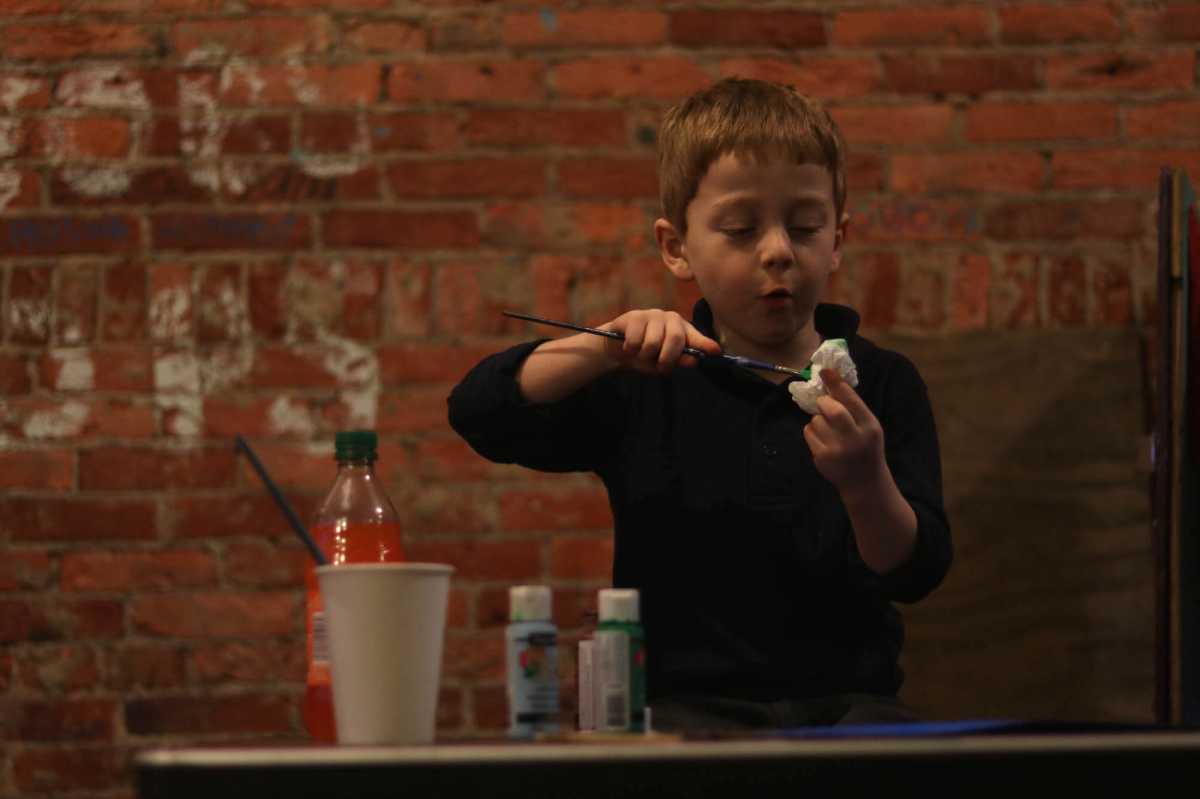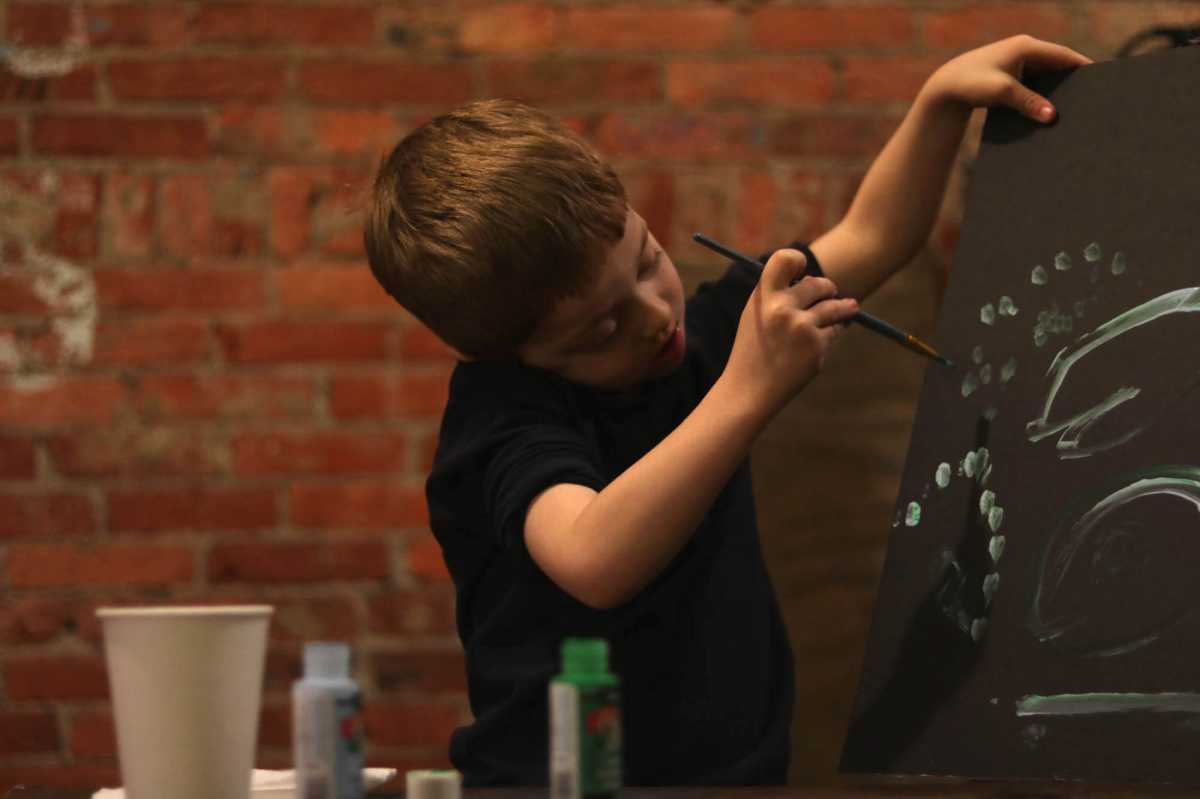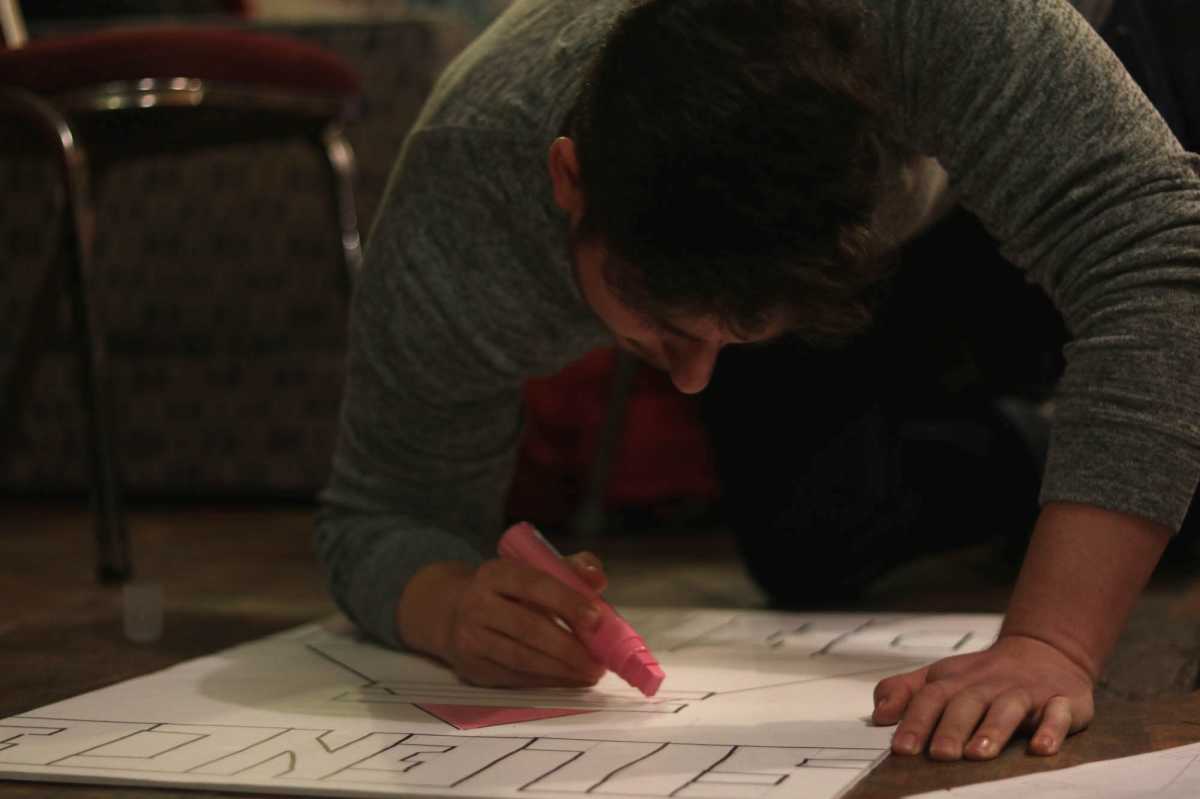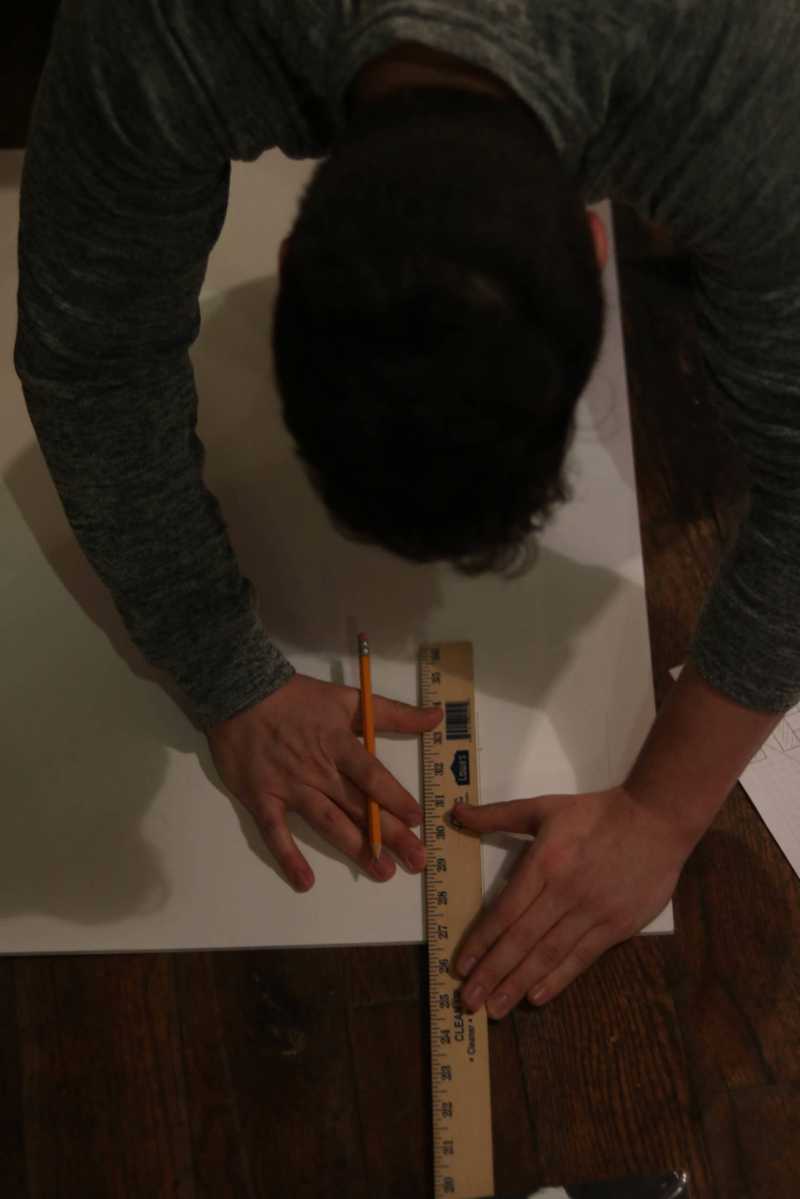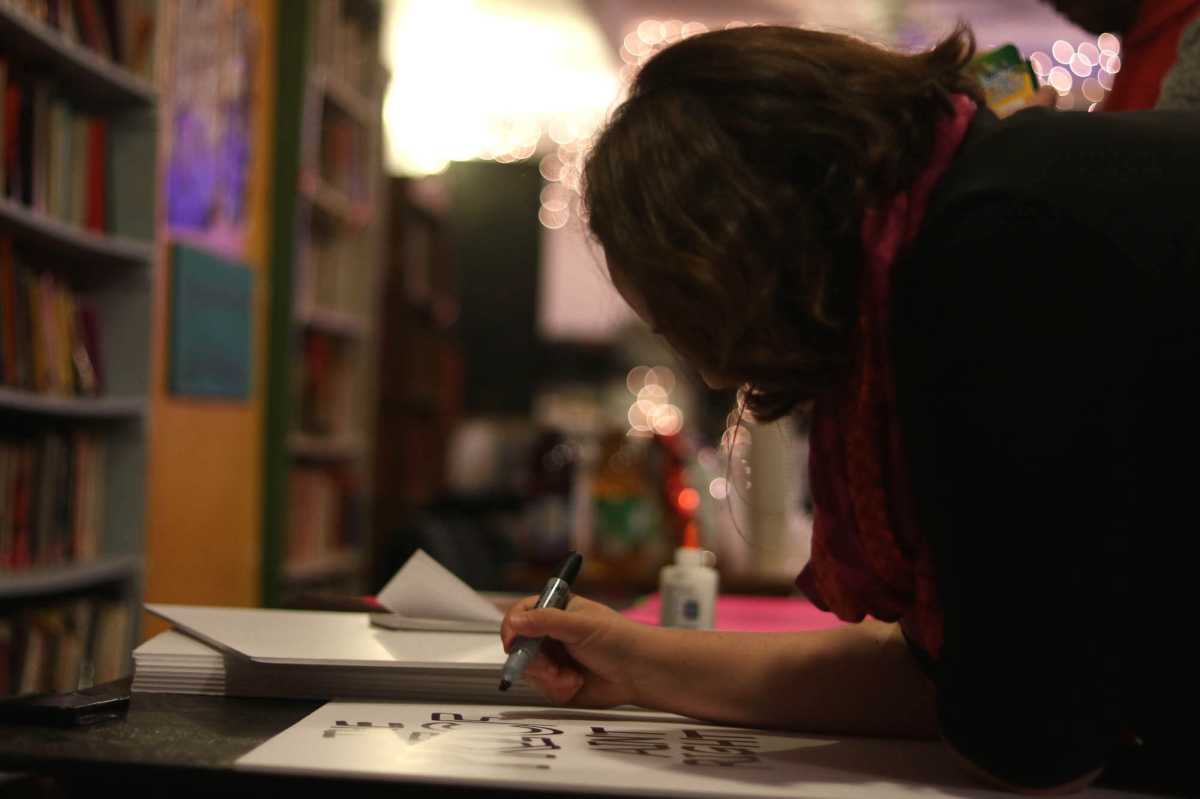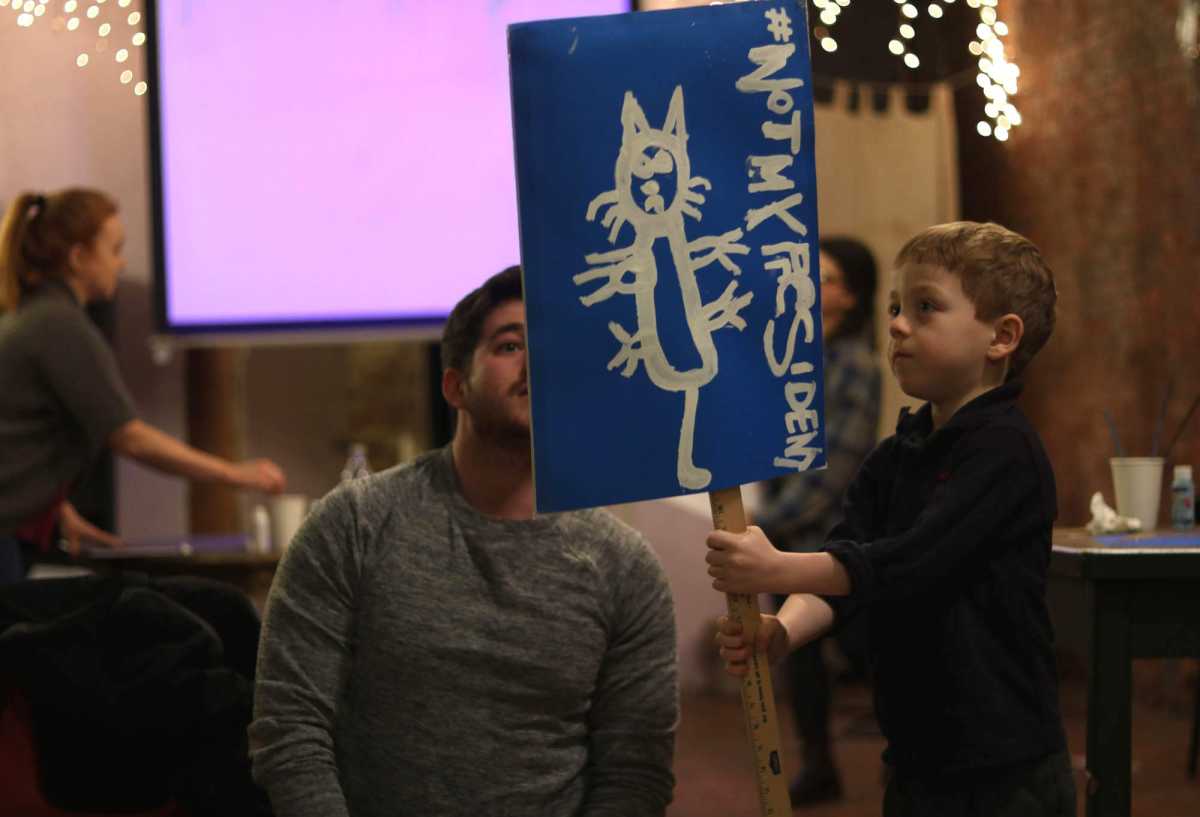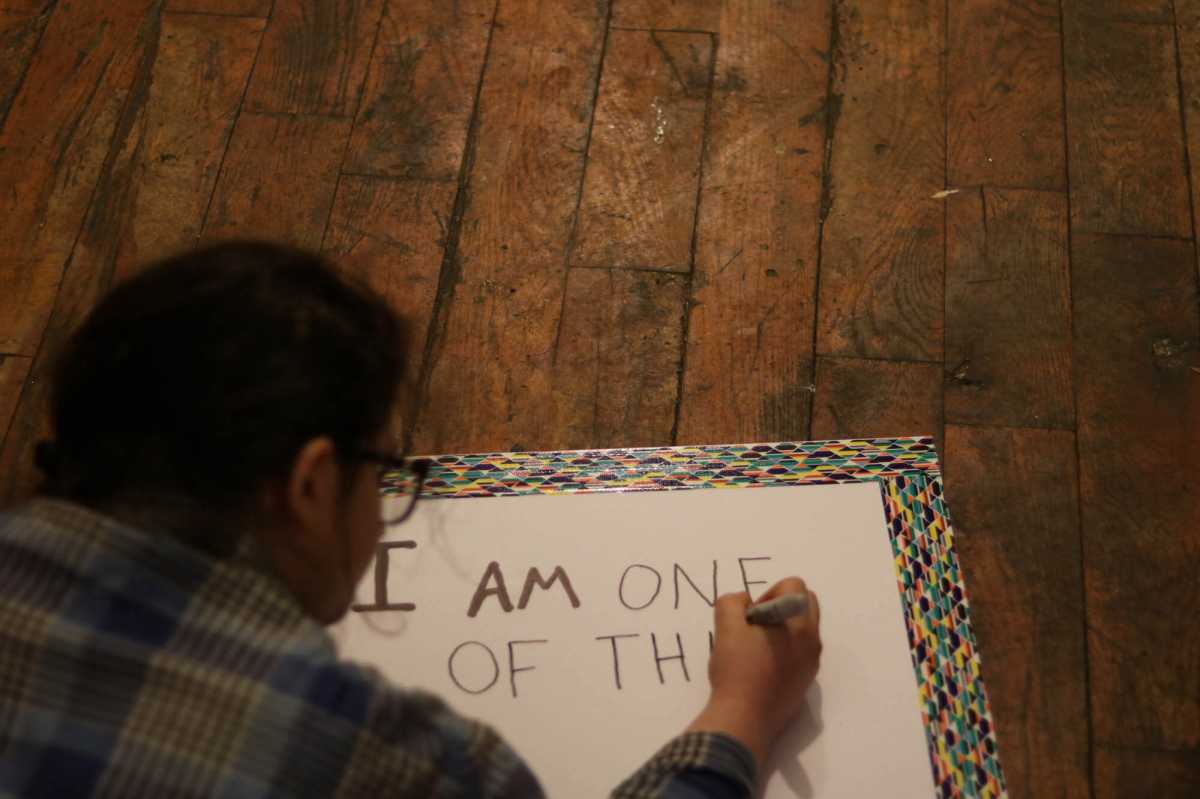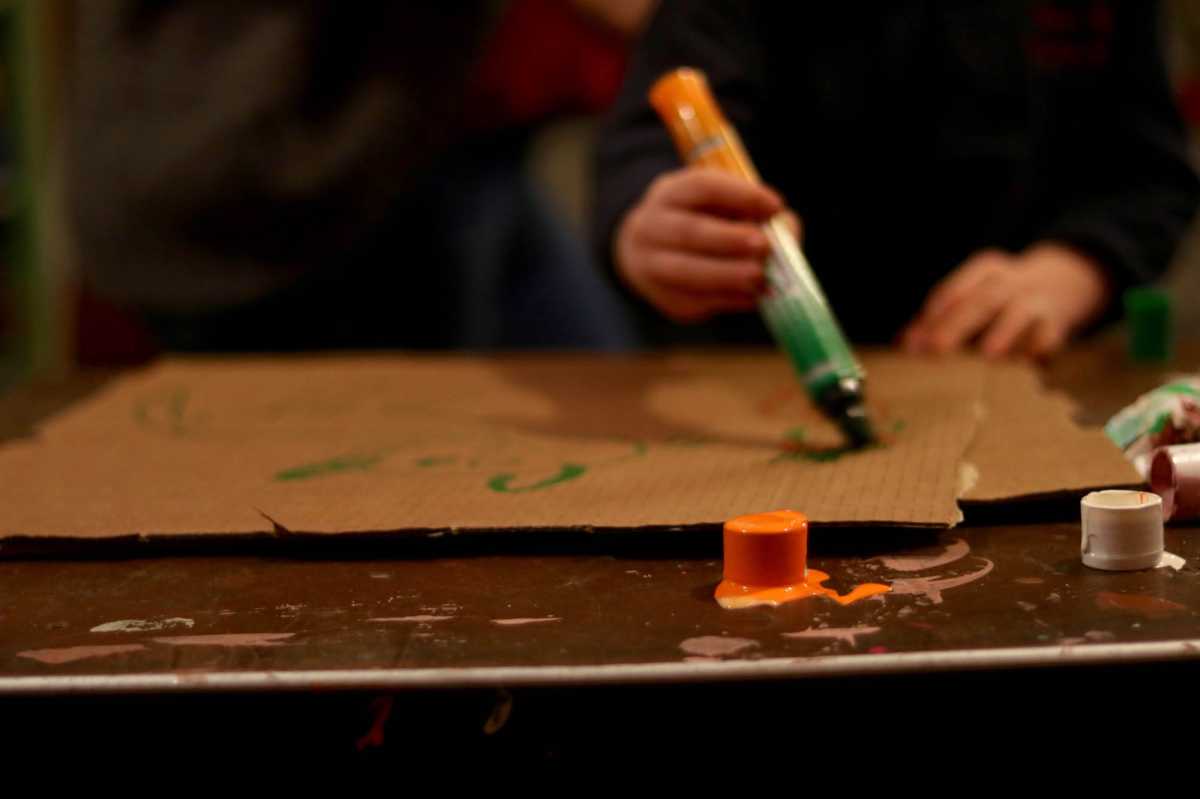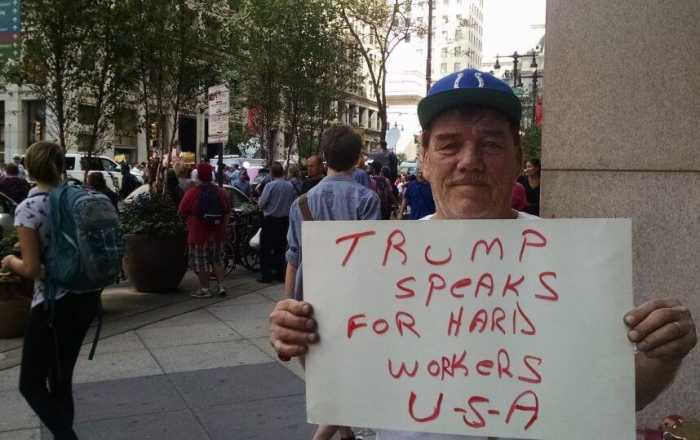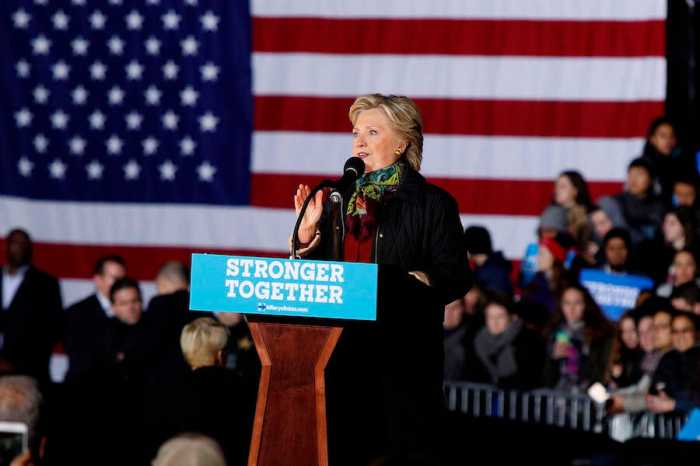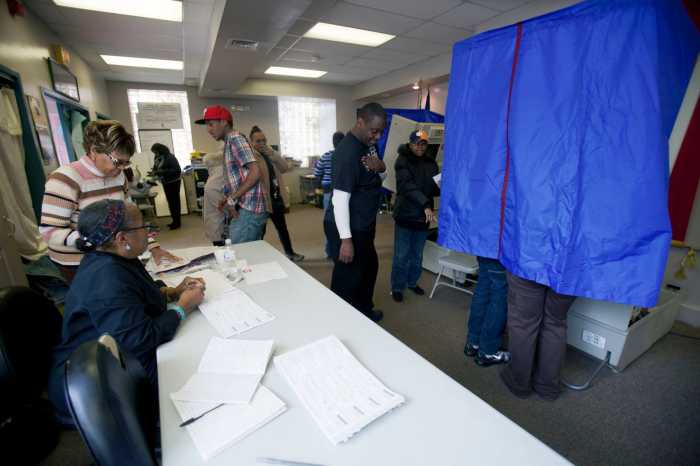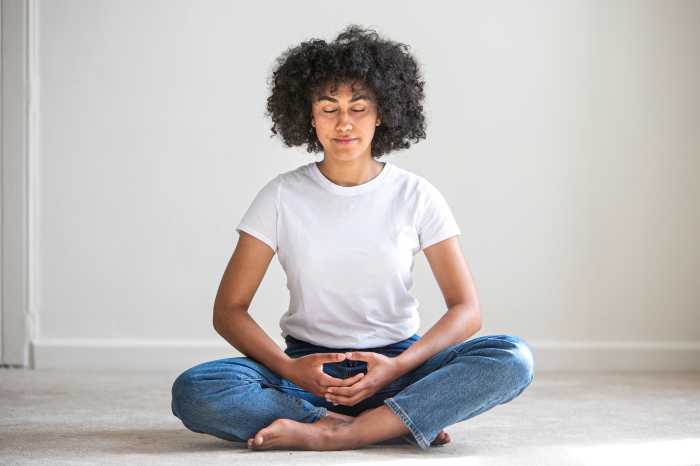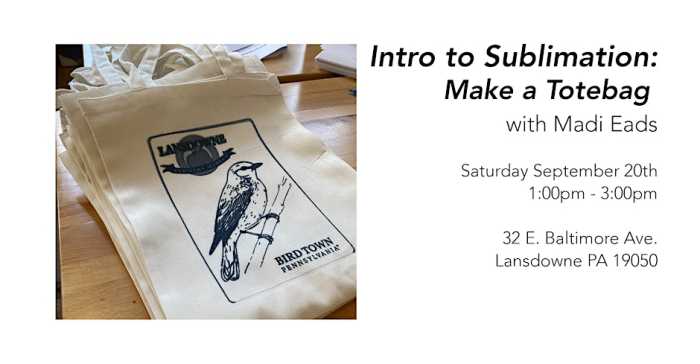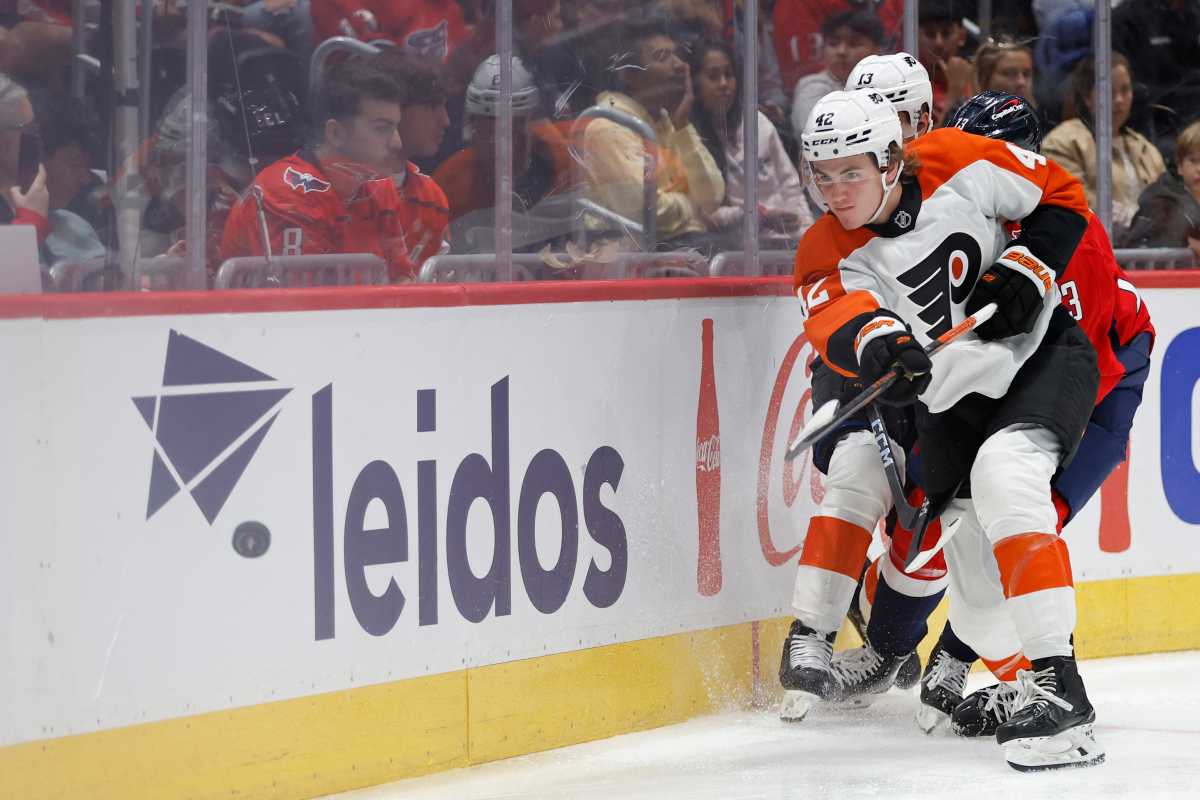Delia King has been protesting since Ronald Reagan.
She rattles off the names of marches she’s participated over the better part of three decades — for women’s choice, for Black Lives Matter, against the Bushes and others — while meticulously painting the names, phone numbers and addresses of Pennsylvania senators on a black poster. In a community center in West Philly, King and about a dozen others are poring over protest signs, gearing up for President Donald Trump’s arrival in Philadelphiaon Thursday. Some signs are crude and to the point: “F— Trump.” “F— you racist, sexist, capitalist, imperialist a—holes.” “F— Paul Ryan.”
Others are motivational, informative or innocent — like the cat that King’s 5-year-old sonpainted with the message “Dump Trump in the litter box.”
The center provided art supplies and a place for citizens to make signs to use themselves or donate to others in the resistance.
“A lot of times people want to get involved, and making signs is kind of like a low-key, easy thing to do,” said Ron, a West Philly resident who helped organize the event Tuesday. Ron asked that his surname not be published because he feared a possible retaliation against the center. “It’s like a low-risk sort of thing, people can bring their kids so it’s like people can still feel like they’re doing something,” he said. “Without the signs it’s almost like the protest is sort of invisible. So to have artwork and good messages, it definitely helps.” Throughout history, the arts have been integral to protest. From songs for social change through the1960s, to pieces of fine art, like Pablo Picasso’s “Guernica,” activists have used the arts to express their messages. It’s no different in 2017. Signs are still an integral and enduringpart of political protest, most recentlyseen in the Women’s March on Washington.
King, a professional artist who created several murals throughout the city, said marches make a point with their sheer numbers, but signs are a way to bring your personal issue to the mix and let your creativity loose. “Art is the soul and the blood that keeps the movement going,”JoeMakoviecki, a musicianwho teachesthe history of protest music, said. “It’sthe thing that keepsreinspiringthe movement when it gets to its lowest points, or supercharges it when there’s another wave, like we’re experiencing right now. “If you think about activism and protest and social justice as a process that functions as a human body … information and facts constitute the mind of the movement; activism and resistance is the physical body itself. Art is like thesouland the blood of the movement.” To Ron, that’s just a sign of the times.
“Trump has been attacking people so personally,” he said. “He has been really going after people’s identity, their very basic identity, people’s private parts and that sort of stuff. … So I think the response to him is going to be proportionate.” “Some people do have the ‘Love Trumps Hate’ thing, but some people don’t feel that way. Some people do feel really threatened and attacked,” he continued. “Why do you have to be polite to somebody who just doesn’t care?”



